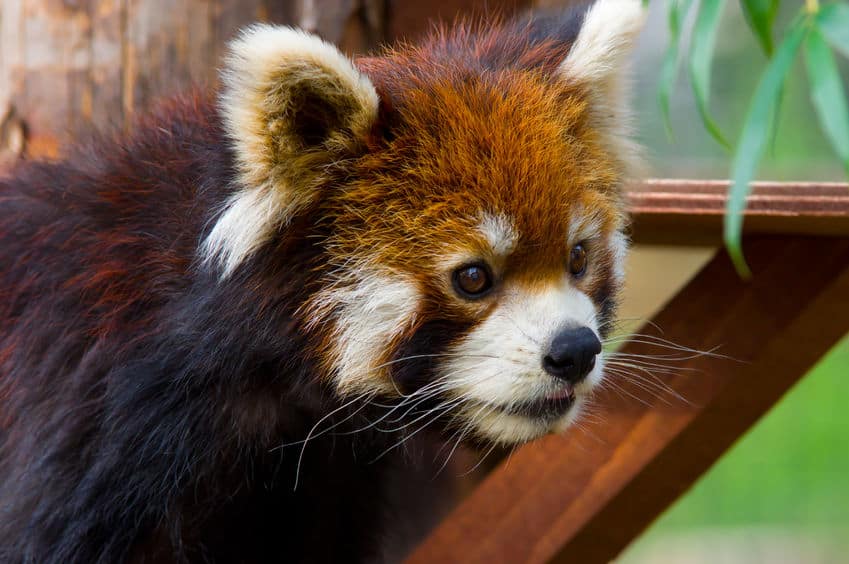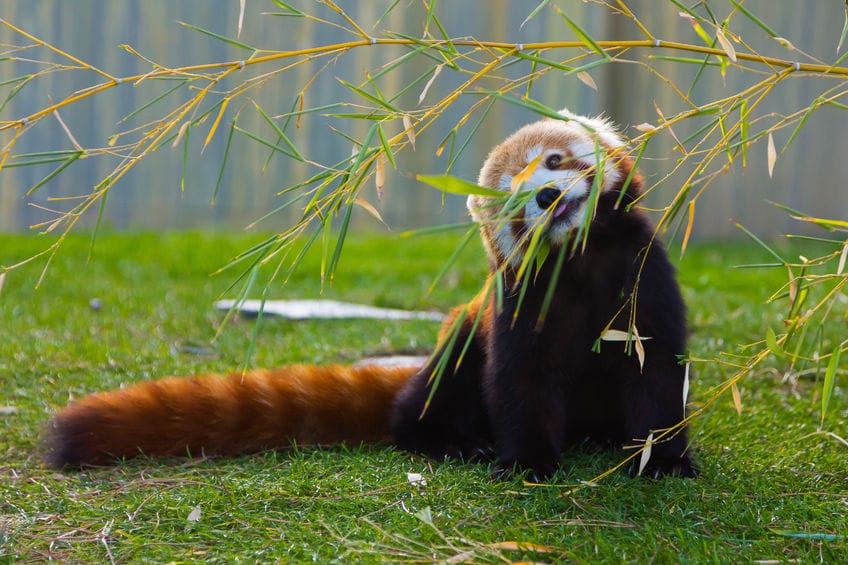Red pandas (Ailurus fulgens fulgens and Ailurus fulgens refulgens, (previously styani), are relatively small animals, but they are huge in the world of pandas and panda history. These housecat-sized bundles of fur, commonly found at zoos around the world, were first seen in 1825, by zoologist Frédéric Cuvier. This occurred many years before the giant panda was found.
Red pandas are currently considered to be in their own family, as you head further up in the taxonomic scale. The red pandas are considered to be distantly related to raccoons. However, red pandas are so distantly related that they are considered living fossils. If that isn’t confusing enough, scientists keep changing the theory of whether there is a connection at all. Basically, if they are not related to another species (i.e. raccoons), they are one in and of themselves, which is why they may be considered living fossils, by definition.
Appearance
Red pandas have long tails that they use to help stabilize themselves. These tales not only help them to keep their balance, but also keep their faces warm when trying to nap in the cold weather. Including these multi-purpose tails, the pandas typically measure about 42 inches long.
Their underbelly fur is black and their top fur ranges from red to orange in color. This special coloring allows the pandas to be camouflaged when they are up in the trees. Any predator looking up from below will not see anything but the black fur of the panda’s underbelly, especially in the dark. Any tree-borne predators looking down cannot see the pandas because the pandas’ red fur matches the color that frequently matches that of common tree moss.
As red pandas age, they can sometimes develop alopecia. This is a case where the pandas lose fur/hair. It is similar to baldness in humans.

Red Panda Activity
Red pandas are arboreal and crepuscular, meaning they like to hang out in trees and are active primarily at twilight and at dawn. They have semi-retractable claws that help them run up and down tree trunks. As they climb down, they turn their front paws inward a bit. They can also jump nimbly from branch to branch. Their paws have an additional wrist bone that helps them grip items like bamboo stalks and apple slices. All of these special skills help the red pandas to keep themselves safe and to obtain the food that they need.
The animals are known for climbing all over people, too (i.e. in zoos). Zookeepers must keep in mind that a red panda who trusts a keeper will eventually start climbing the keeper’s clothing, especially if the keeper is holding any treats.
Habitat
Their natural habitat is in Nepal, China, Tibet, and Myanmar, in high-elevation forests that have ample bamboo. As with the giant panda, bamboo forms a large part of the red panda’s diet. However, the red panda is picky and will eat tender young leaves and shoots only, and not older, tougher leaves. Zoos usually feed red pandas a combination of bamboo leaves, leaf-eater pellets, and treats of sliced apples, grapes, and other fruit. Red pandas love these fruits and have been known to compete for slices. Red pandas are mainly herbivorous, but they will also eat eggs, small insects, and even other small animals, like rodents.
The animals thrive in colder weather and have fur on the pads of their paws to help with traction on ice. Hot weather is a problem for them, with summers in zoos leaving them panting unless they are provided with a cool place where they can rest.

Family
Female red pandas have between one and four cubs per litter. Red pandas love to play. Often the mother tackles and wrestles with her cubs and the cubs do the same to each other. Once the cubs reach about 18 months old or so, they become more independent. In the wild, this generally marks the time when they start to separate from their mother.
They communicate with high-pitched squeaks that usually indicate alarm. They also communicate with odd, low-pitched, quacking sounds called “huff-quacks.” The huff-quacks generally indicate irritation.
Looking to the Future
Red pandas are considered vulnerable, meaning the wild population is decreasing. Deforestation and poaching pose two of the biggest threats to the pandas. Zoos take part in breeding programs, and some zoos raise the pandas to be released into the wild. There is much hope that conservation efforts can help in growing the red panda populations throughout the globe.
